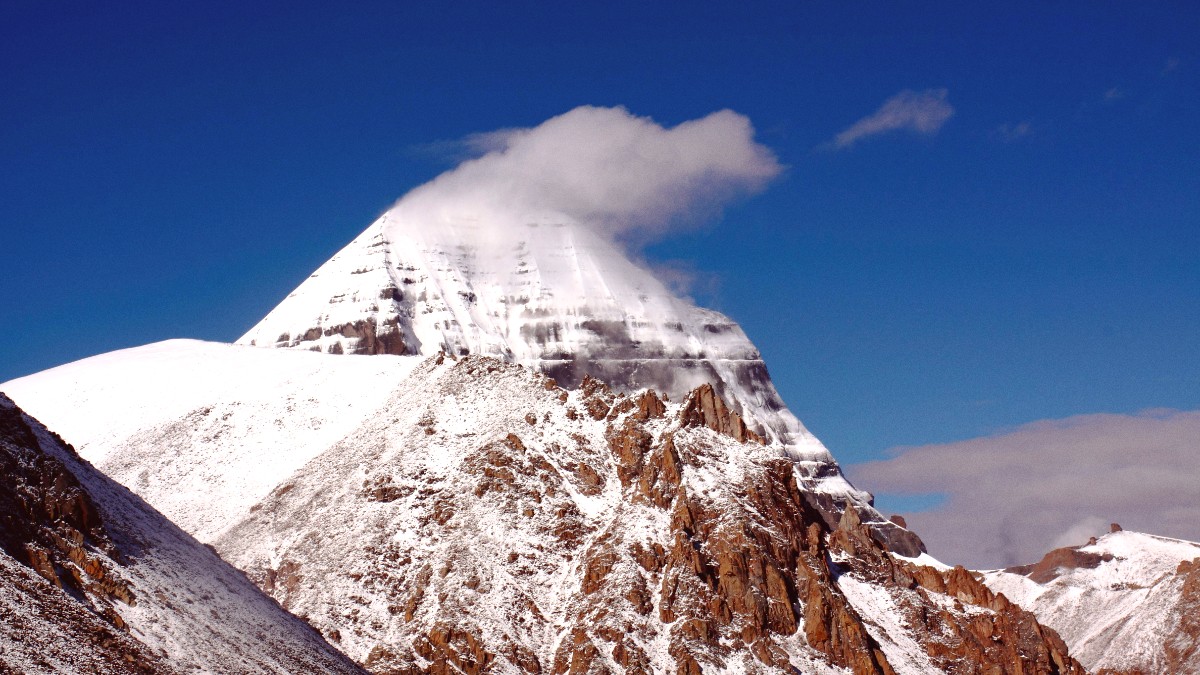
Tibet, China
Tibetan cuisine reflects its high-altitude environment, reliance on yak products, and influences from Chinese and Indian flavors. Staples include barley (tsampa), yak meat, dairy, and noodles. The harsh climate historically limited agriculture, leading to a diet rich in protein and fats.
ingredients feature barley (often as "tsampa"), yak products (meat, butter, cheese, milk), noodles (Thukpa, Thenthuk), mutton, and limited vegetables like potatoes and cabbage. Mild spices like ginger, garlic, and chili appear in dishes.
Breakfast, lunch, and dinner are typically served at standard times. Meals often occur earlier in remote areas for trekkers, allowing for extended daylight hours for hiking.
Chopsticks serve as common utensils, with spoons available for soup. Finish your plate where possible to show appreciation for the food and effort.
Warm beverages, specifically butter tea, are frequently served with meals, aiding warmth and hydration at altitude.
This is the Tibetan staple: roasted barley flour, often mixed with butter tea or water to form a dough. You will find it everywhere, especially in guesthouses, giving sustained energy.
A fundamental part of the pilgrim's diet.
Momos (Tibetan dumplings) are steamed or fried, typically filled with yak or mutton. Thukpa and Thenthuk are hearty noodle soups with vegetables and/or meat, very comforting in cold weather.
Comforting and calorie-rich choices for trekkers.
Sha Balep, a fried or steamed bread filled with seasoned meat, presents a flavorful and portable snack. Dresil, a sweet rice dish with yak butter and dried fruits, often graces special occasions. Dried yak meat makes a common high-protein energy source.
Quick energy sources for the trail.
These are very limited. Lhasa is a few restaurants with Indian, Nepalese, or simple Western dishes. None exist in the Kailash region.
Local markets in Lhasa and larger towns offer fresh produce, dried goods, and spices. Dedicated food halls for tourists are not present.
Vegetarian options are possible but challenging, as many Tibetan dishes include meat. Vegan travel faces extreme difficulty, especially along the kora, due to pervasive yak butter and milk.
Managing allergies and gluten-free diets presents challenges due to language barriers and basic cooking practices. Gluten-free options are hard as barley and wheat noodles are staples.
Halal and Kosher options are not available. There are no specific Halal or Kosher establishments in the region.
It is absolutely mandatory to inform your tour operator of all dietary restrictions prior to booking. They can advise on feasibility and arrange basic provisions.
Early and clear communication smooths arrangements.
Pack a variety of calorie-dense, dietary-appropriate snacks. Energy bars, nuts, dried fruit, or gluten-free crackers supplement basic meals and confirm you have familiar, safe food.
This lessens reliance on potentially unsuitable local options.
Not in the Kailash region, but in Lhasa.
Focus on nomadic pastoralism.
Tied to Tibetan calendar.
Extreme simplicity and communal meals.
Always wash or sanitize your hands before eating, especially in remote areas with limited facilities.
Personal hygiene safeguards health.
Drink only bottled or purified water to avoid gastrointestinal issues.
Safe hydration is paramount.
Lhasa hosts a greater variety of dining, including some places with Indian, Nepalese, or basic Western dishes. Options for more varied dining exist there.
Your guide can facilitate interactions with local vendors and explain various dishes.
Your interaction with local communities will mainly be through your guide and the guesthouses you use, as formal community-based tourism is limited.
You can learn basic Tibetan phrases from your guide, which can enrich your interactions. No formal classes exist in the immediate region.
If you travel during May or early June, you might witness the Saga Dawa Festival at Mount Kailash, a significant cultural immersion opportunity.
Approach local cuisine with an open mind, as flavors and textures may differ significantly from your usual diet.
Flexibility enriches the journey.
Your local guide can bridge cultural gaps, explaining dishes and dining etiquette.
They are your best resource for local insights.
The food is tailored for high-altitude energy, prioritizing fats and proteins.
Eating becomes a functional part of the pilgrimage, fueling the spiritual journey.
The cuisine reflects centuries of adaptation to the unique Tibetan plateau environment.
Embrace the local flavors as a part of your journey, keeping an open mind for simpler, yet hearty, meals. This culinary exploration forms a memorable aspect of the adventure.